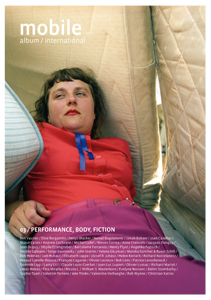Featuring
Ben Vautier, Elise Bergamini, Denys Blacker, Jonah Bokaer, Nenad Bogdanovic, Joan Casellas, Shaun Caton, Andrew Cochrane, Michel Collet, Nieves Correa, Anne Creissels,
Jacques Donguy,
Jean Dupuy, Sibylle Ettengruber, Bartolomé Ferrando, Henry Flynt, Angelika Fojtuch, Andres Galeano, Serge Gavronsky,
John Giorno, Yelena Gluzman, Monika Günther & Ruedi Schill, Bob Holman,
Joël Hubaut, Elisabeth Jappe, József R. Juhász, Helen Koriath, Richard Kostelanetz, Nicola L.,
Arnaud Labelle-Rojoux, François Lagarde, Olivier Lecreux, Bob Lens, Patrice Lerochereuil, Dominik Lipp, Larry Litt, Claude Louis-Combet, Jean-Luc Lupieri,
Olivier Lussac,
Richard Martel,
Jonas Mekas, Fina Miralles, William S. Niederkorn, Evelyne Noviant, Bálint Szombathy, Sophie Taam, Valentin Torrens, ieke Trinks, Valentine Verhaeghe, Christian Xatrec, Rob Wynne.
Charles Fourier saw
Absolute Questioning and
Absolute Distancing as the surest means to “get off the beaten path”, in order to “get away from it in all possible ways”. We have chosen to make a practice of this distancing, to adhere to the same approach, and we have been experimenting along this line from the very inception of the
Mobile Album International collection. We approach
performance by disbursing its corpus in texts, paratexts, narrations, maps, images, experiential notes. By offering to navigate through these different registers, we are distancing ourselves markedly from a position of identification or systematization and are not looking at performance as an object detached from an artist's individual history and practice: by acknowledging the constitutional impurity of performance, from the very moment it started to what it might become. The album “Performance, Body, Fiction”—drawing upon temporary and heterogeneous topologies—aims to reflect singular paths that intersect and engage in dialogue. We know how a flash of wit or a wink can be ruined once it is analyzed, and how the fleeting and the irrepressible can be lost in discourse. We choose instead to show the traces that result from an experience of temporality, from an art in action practiced by contemporary artists, and among other areas of interest, to give visibility to the thought processes of artists and critics with regard to this experiential and experimental space in art. The potential dialogues that can occur between these two poles may well surpass them, while simultaneously undoing and building the object of discourse.
Michel Collet















